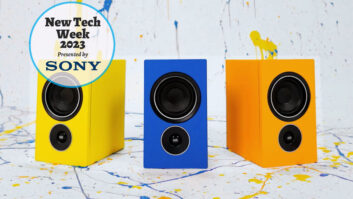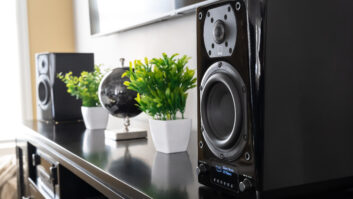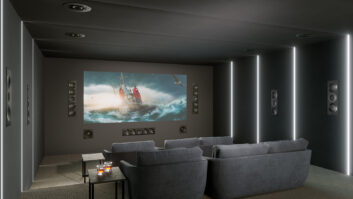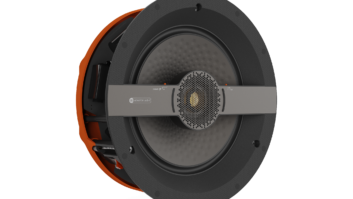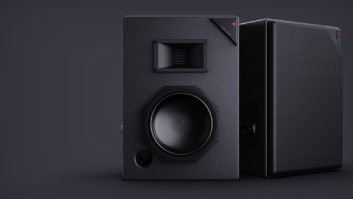
Purely in terms of sound quality, the Wisdom P2i is almost as captivating as the company’s flagship LS4, for many of the same reasons.When a company known for crafting high-performance, cost-is-no-object luxuries introduces a more attainable, more affordable alternative, I can’t help but start looking for the essential commonalities. To wit, imagine if Lamborghini introduced a $30,000 coupe. We’d all be squinting at it sideways, trying to figure out exactly what made it a Lamborghini. Likewise, when Wisdom Audio introduces an in-wall speaker for $1,500 which doesn’t require the use of the company’s 7.3-channel SC-1 system controller and isn’t bi-amplified, one cannot help but wonder, “Where’s the Wisdom in that?” The Big-W Wisdom, that is.
These days, there’s obviously quite a bit of little-w wisdom in introducing an affordable, high performance in-wall that works with virtually any sound system. Thankfully, you don’t have to look very deep to find the Big-W Wisdom, either, especially if you’re hip to the company’s reliance on planar magnetic driver technology and its insistence that in-wall and on-wall speakers can sound every bit as astounding as their in-room counterparts.
I first laid eyes on prototypes of Wisdom’s new Insight Series in-walls when I visited the company’s Carson City, NV headquarters back in July of 2011 to attend dealer training and review its massive flagship LS4 line source monolith, and at the time, those prototypes definitely gave off a relatively “budget” air. (Relative to the company’s Sage and Wisdom series speakers, that is). Not in their sound, mind you (they weren’t operational yet) but in their design–their fit and finish. In the two years since, though, Wisdom has obviously put a lot of work into the Insight Series, upgrading its in-wall mounts to the same Uni-Grip system employed by the more-expensive Sage Series, tweaking its bass drivers, developing a gorgeous magnetic metal grille, and equipping the Insight Series with what effectively amounts to two distinct crossover networks.
All of which combines to make the Insight P2i an incredibly hefty speaker, given its relatively small size. Wisdom sent along a pair of these husky beauties, as well as a pair of fake-wall cabinets, not only to give me the opportunity to put them through their paces in my action media room, with my own electronics, but also to experience the installation process myself.
Despite their weight–14 pounds for an enclosure that measures just 19.44 x 5.39 x 3.43 inches–the P2i is incredibly easy to install. Unscrew a few screws, slip the Uni-Grip into the wall cutout, tighten a few screws, insert the speaker enclosure, tighten a few more screws, and you’re done. The P2i doesn’t rely on a back box, and can accommodate a wall thickness of up to 1.25 inches if you’re using double wall construction. Owing to the design of the Uni- Grip, you don’t even have to worry about which direction is up (or left or right if you’re installing the P2i as a horizontal center channel). Once the speaker is in place, the magnetic grille slips on easily, and if you want to match the grille to the height or width of your display, Wisdom can knock out a custom set for you quickly.
When you’re installing the speakers, you’ll notice the presence of a switch labeled “flat” and “target,” which is where the separate crossover networks come into play. The intent is for you to set the switch to “flat” when running room correction, then flip it to “target” to compensate for the harsh high frequencies that often result from auto-EQ programs like Audyssey, Yamaha’s YPAO, and so forth. In my system, this shouldn’t really be unnecessary, as I EQ’d the system with the Anthem Room Correction of my D2v AV processor, leaving the frequencies above 5 kHz uncorrected.
I played around with both settings nonetheless, and was impressed by the subtlety of the effect that the target setting imparts on the sound, and despite preferring the sparkle of the flat setting at first, I eventually settled on target for its politer, more forgiving effect on some of the less hi-fi music in my collection. It’s definitely not as stark as a notch filter setting. Instead, it gracefully tames the highest frequencies, putting a gentle tilt on the distinctive voice of the P2i rather than changing it.
If you’re unfamiliar with the planar magnetic driver (PMD) sound, it’s akin to the Heil Air Motion Transformer (and variants thereof employed by MartinLogan’s Motion Series and all of GoldenEar Technology’s speakers): beautifully distortion free, dynamic, room penetrating, and effortless. Of course comparing the little P2i to a $40,000 LS4 might seem unfair, but there’s still quite a bit of comparison to be made, which is astounding in and of itself. Granted, the line-source dispersion characteristics of the LS4 are quite different from those of the point-source P2i, and the little in-wall, of course, doesn’t crank out the SPLs of its bigger brother.
But purely in terms of sound quality, the P2i is almost as captivating as the LS4, for many of the same reasons. I queued up the same Bon Iver track that the LS4 delivered so gorgeously–“The Wolves (Act 1 &2)”–and found myself almost just as awed by the incredible depth of the P2i’s soundstage, the way the PMDs wove the song’s intricate textures through the air rather than forcing them through it, the way the percussive breakdown at the end seemed to emanate from the air at the back of the room. That’s purely in stereo mode, mind you, with a little help on the low end from my regular subwoofer array.
Anthem Room Correction agreed with Wisdom’s literature that an 80Hz crossover point is the right one for the P2i, leaving its own pair of traditional bass drivers to cover the range from there up to 650Hz, at which point the PMDs take over. It’s a seamless blend, though, one that does equal justice to female vocals, like “Waltz (Better Than Fine)” from the DualDisc release of Fiona Apple’s Extraordinary Machine–as it does the male voice, like “She’s Always a Woman” from the 88kHz/24bit HDTracks download of Billy Joel’s The Stranger. The P2i delivers both with astounding depth and incredible naturalness, which is all the more impressive when you consider that I did everything in my power to position the faux-wall cabinets at a disadvantage–placing them parallel to the wall, flanking my TV, with no toe-in and no repositioning–to most accurately recreate the in-wall experience.
Granted, the P2i isn’t the easiest speaker in the world to drive. With 86 dB sensitivity and minimal impedance of 3.75Ω, and a pretty low peak power handling rating of 140 watts, you’ll probably want to avoid using a low-powered budget receiver to drive the speaker. Not that a budget receiver would do it justice, anyway. At any rate, my Anthem A5 amp didn’t struggle with the P2i at all, even when pushed to intolerable volumes. And, in my rather sizable media room, the P2i hit those volumes with no struggle, either, while maintaining its clarity, its finesse, and its utterly distinctive voice. This was quite an impressive feat for the littlest speaker in Wisdom’s lineup.
775.887.8850
wisdomaudio.com
Kudos
Wisdom Audio’s P2i in-wall point-source speaker delivers undeniably Wisdom-like performance for a fraction of the cost of its higher-end speakers.
Concerns
I would definitely recommend driving the P2i with better, more powerful amps than you would find in the average budget AV receiver.
Product Specs
• Frequency response: 80Hz – 20 kHz ± 2dB relative to the target curve
• Crossover frequency: 650 Hz
• Nominal Impedance: 6Ω
• Minimum Impedance: 3.75Ω
• Sensitivity: 86 dB/2.83V/1m
• Power handling, peak: 140w
• Maximum SPL: 106 dB @ 1m
• Dimensions: 19.44 x 5.39 x 3.43 inches (hwd)
• Recommended Enclosure Volume: 0.65 cubic feet (18.3 litres) or more
• Minimum Enclosure Volume: 0.36 cubic feet (10.2 litres)
• Maximum Wall Thickness: 11⁄4 inch (3.175cm)
• Shipping weight, each: 14 lbs. (6.4 kg)
